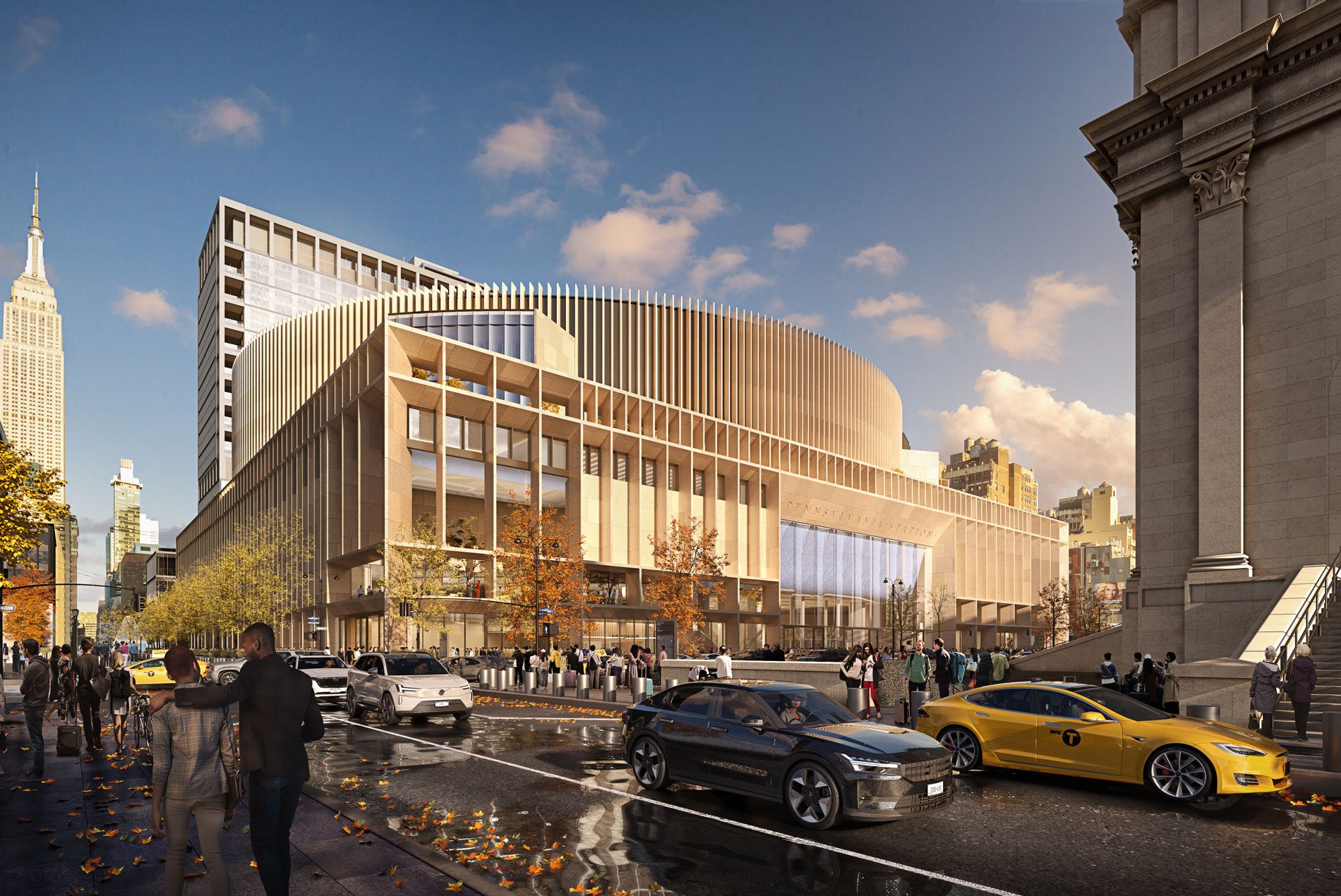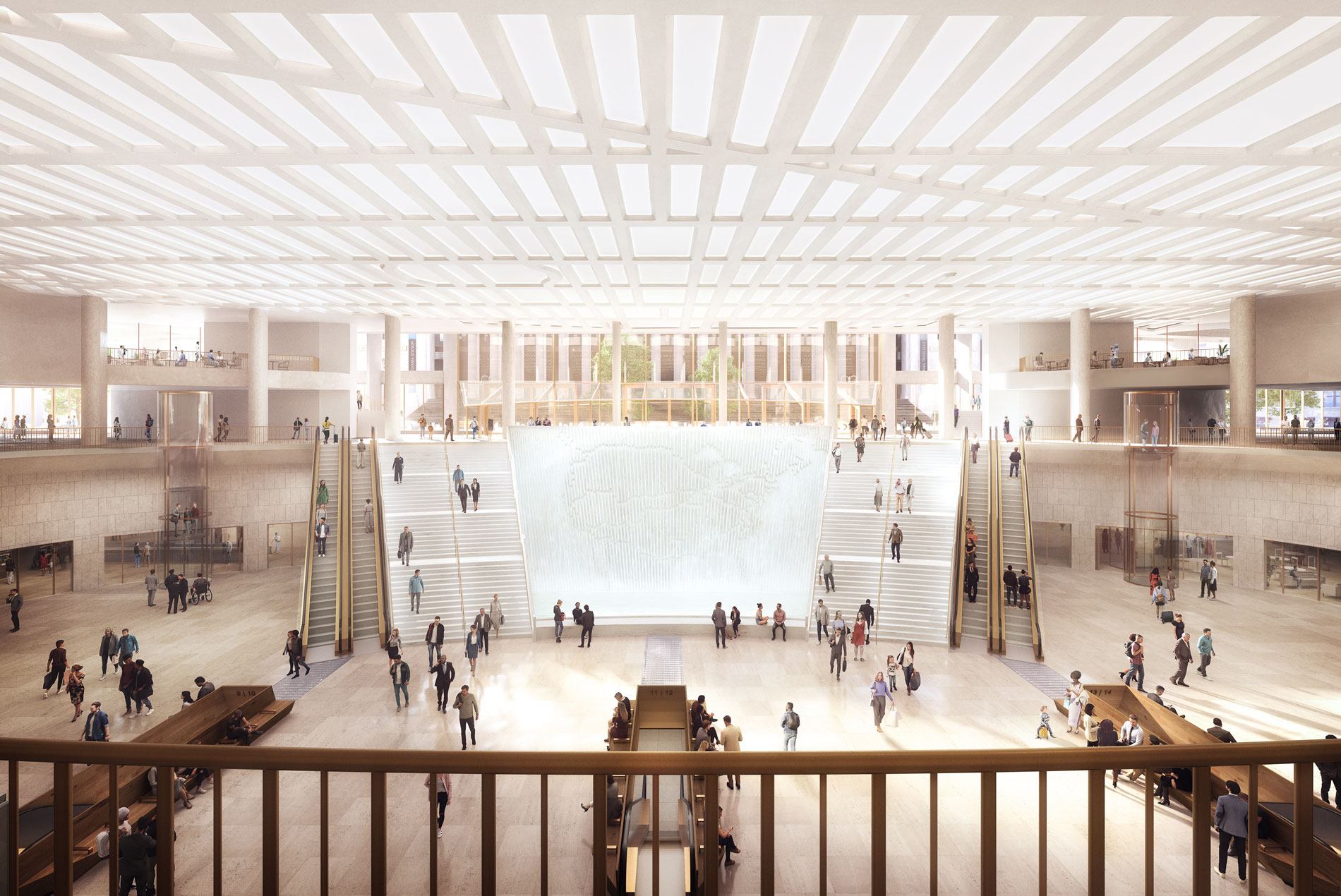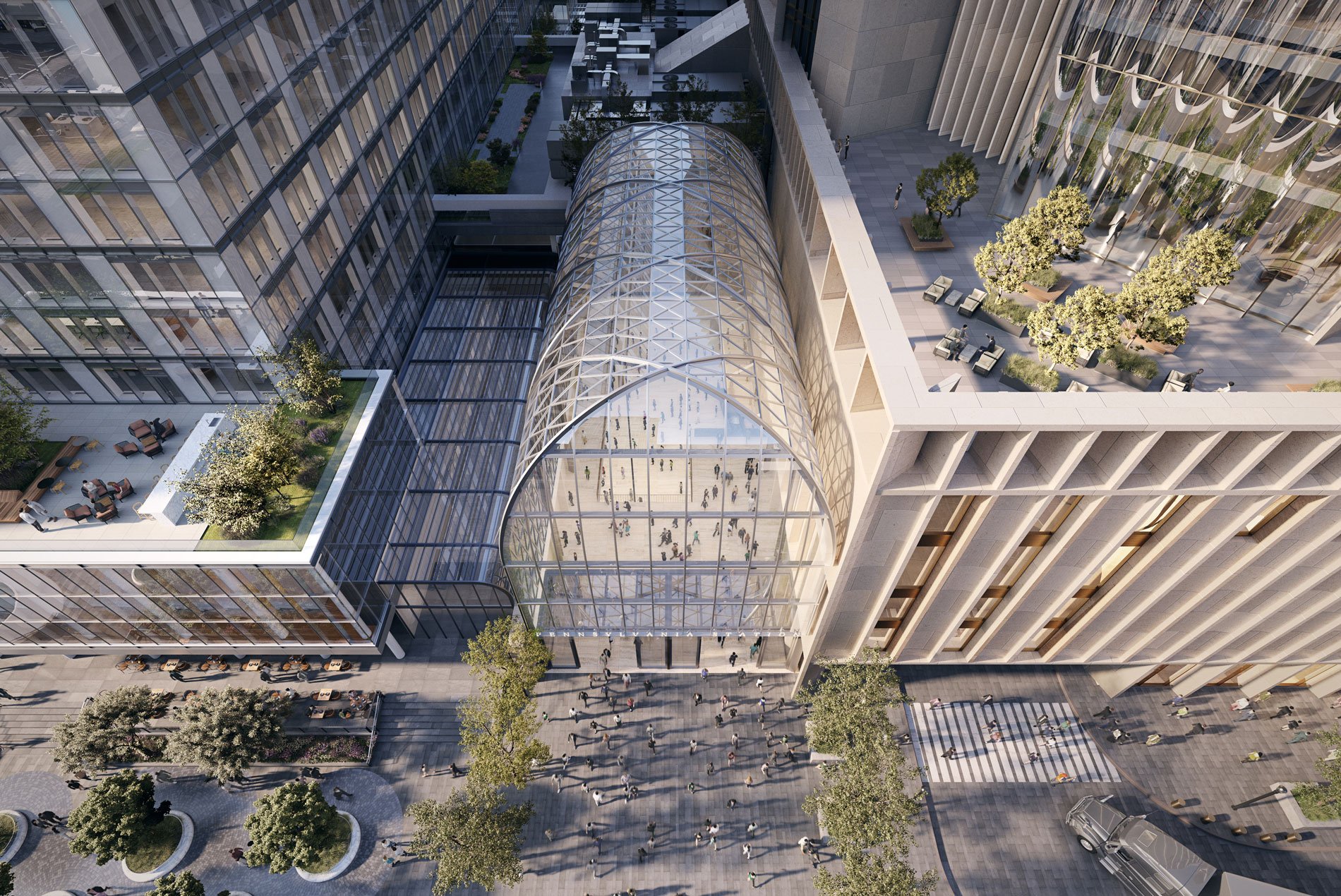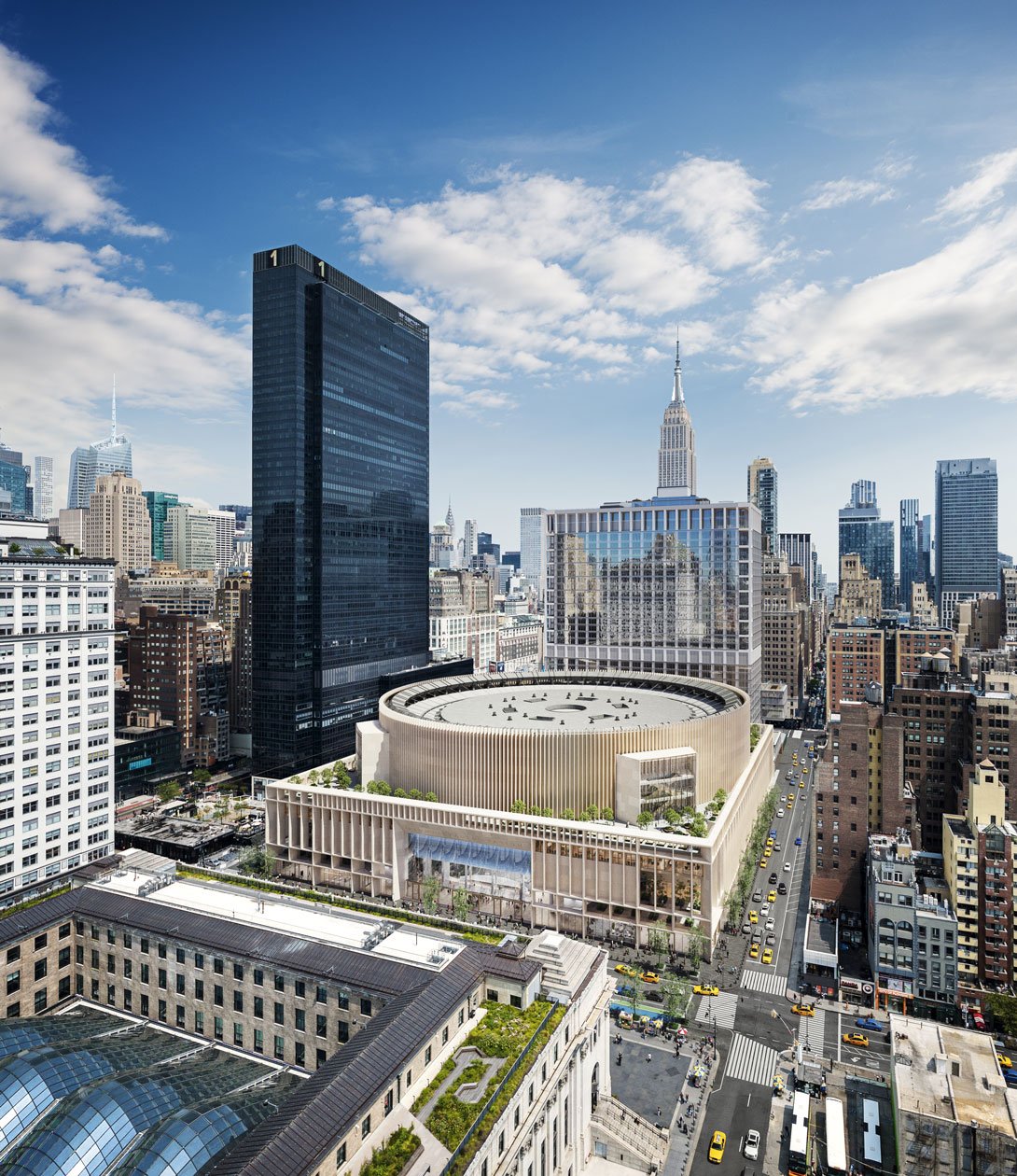Estimated $6 billion project would be delivered within six years of approval. In partnership with HOK and PAU, ASTM’s full-block proposal achieves Governor Kathy Hochul’s vision for Penn Station with more light, enhanced ADA-compliant accessibility to all train platforms and a grand new entrance on Eighth Avenue.
ASTM North America today unveiled its comprehensive vision for a new Penn Station that can be delivered to New Yorkers faster and at a lower cost than previous proposals with reduced risk to taxpayers and the community.
The $6 billion project would fully revitalize the Penn Station block, both above ground and below. Paid for by a variety of funding sources—including a combination of federal loans and grants, existing committed funds for Penn Station and a $1 billion investment from ASTM North America—ASTM’s P3 proposal designed by HOK and Practice for Architecture and Urbanism (PAU) could be delivered within six years of approval by New York State and its partners.
“ASTM’s plan will solve the litany of issues that have long plagued Penn Station and is the full realization of Gov. Hochul’s own vision,” said ASTM North America CEO Pat Foye. “Our team has spent months speaking with elected officials and community stakeholders to shape a proposal that will improve pedestrian flow, add needed entrances, widen corridors, increase accessibility and create more light and open space. We are confident that this is the plan that New Yorkers deserve, not only because of its innovative design but because our public-private partnership model will lower the financial risk for taxpayers and more effectively deliver a modernized Penn Station in its entirety.”
“In collaboration with HOK and PAU, ASTM has developed a thoughtful, transformational plan that will fulfill all of Gov. Hochul’s hopes for a new Penn Station,” said ASTM North America Senior Vice President Peter Cipriano. “Our vision will once again return Penn Station to be an iconic transit hub worthy of New York City with a grand entrance on Eighth Avenue, more light, more space, more accessibility and more efficiency. We applaud Gov. Hochul’s visionary efforts to transform Penn Station for New Yorkers and look forward to continuing to engage with elected officials, community leaders and local residents to deliver this much-needed plan that is more cost-effective, less burdensome on the state and taxpayers and more realistic than any previous proposal.”
The project team—which also includes HNTB, Lendlease, Severud, Halmar International and ME Engineers—engaged in a months-long process with local elected officials, community leaders and key stakeholders, incorporating feedback to the overall project vision to become an efficient, realistic and cost-effective solution to reimagining Penn Station. ASTM worked with collaborating design architects HOK and PAU to develop a design for Penn Station that builds upon the State’s existing plans for a new light-filled and airy midblock trainhall between 31st and 33rd streets and improve subway passenger connectivity from Seventh Avenue.
The proposed design keeps Madison Square Garden in place, creating two main train halls accessed by a grand Eighth Avenue entrance with 55’ high ceilings and a mid-block hall with 105’ high ceilings and a series of windows and skylights that bring natural light to the vast majority of Penn’s users. A stone-clad exterior draws inspiration from the neoclassical McKim, Mead & White-designed Moynihan Train Hall across Eighth Avenue. Open-air terraces and a new exterior plaza, along with improved interior circulation and programmed spaces, prioritize the user experience while enhancing the civic character and public realm of the surrounding neighborhood.
“HOK has worked closely with ASTM and PAU to ensure that this visionary plan will create the Penn Station New Yorkers deserve,” said HOK President Carl Galioto, FAIA. “The New Penn Station will bring much-needed light into two new train halls, including a grand new Eighth Avenue hall with 55-foot ceilings above the passenger concourse and a glass-wrapped mid-block hall with a sunlit passage between West 31st and 33rd streets. This proposal finally gets rid of a dark, cramped station and creates an inspiring public space worthy of the busiest railway station in North America.”
Unlike previous plans, ASTM’s proposal requires no development of the surrounding community to offset costs for station improvements. It does not require the relocation of Madison Square Garden, which will be financially responsible for the recladding of the Garden’s facade. It also improves street safety along the entire block, shifting truck loading for MSG off street and within the building’s footprint.
The ASTM proposal provides a single-level passenger concourse with further improvements to Seventh Avenue entrances at West 31st and West 32nd streets. The new and improved entrances will be fully ADA accessible, with new elevators, escalators and stairs that connect the concourse directly to the street. The number of enhanced and increased stairways, escalators and elevators will increase from 91 elements to 120 elements, creating a 30 percent reduction in platform egress times and enhancing platform accessibility for all 21 tracks. This improvement in platform vertical circulation allow for a safer and easier passenger exit experience. As a result, improved egress from the platforms will help increase passenger throughput, accommodating higher capacity and more frequent trains that result from Gateway and other transit investments.
By incorporating the new entrance where the former Hulu Theater currently sits, the new design allows for 70 percent of passengers to exit from their train platform into a daylit area. It significantly improves commuter flow throughout the station with the increase in loading and unloading capacity at the platform level. This inclusive and sustainable dual-train hall design will help Penn Station accommodate market and demographic changes in the decades to come.
The $6 billion price tag fully considers all aspects included in the proposal—from property acquisition to construction to financing to the long-term relationship between all stakeholders on site, including Amtrak, the Metropolitan Transportation Authority, NJ Transit and Madison Square Garden. As a P3, ASTM would contribute immediate upfront capital to jump-start the project, and would bear any potential cost-overruns throughout the life of the project, reducing financial risk to taxpayers. ASTM would also assume all responsibility for the cleanliness and general upkeep of the station as well as elevator and escalator maintenance to ensure ongoing accessibility.
Learn more about the design vision for a new Penn Station at anewpenn.com.
About ASTM North America
ASTM North America (ASTM NA), formerly Itinera Infrastructure & Concessions (“IIC”), was established by ASTM S.p.A. in 2019 with the aim of participating in the growing P3 sector in North America. ASTM is the parent company of the ASTM Group, and is the second largest motorway concessionaire in the world on the basis of the circa 3,000+ miles of motorway concessions managed in Italy, Brazil and the UK.
About HOK
With offices around the globe, HOK designs buildings and spaces that respond to the needs of people and the environment. HOK designers are rooted in technical excellence, driven by imagination and focused on a solitary goal: to deliver solutions that inspire clients and communities. HOK’s New York practice is celebrating 50 years of designing significant civic projects, including LaGuardia Airport’s new Terminal B.
About PAU
Led by Vishaan Chakrabarti and Ruchika Modi, New York-based studio Practice for Architecture and Urbanism (PAU) is dedicated to the advancement of resilient, equitable, and joyous communities through connective design. With a team of over 30 architects and staff, PAU designs forward-looking environments, including public infrastructure, civic institutions, and social housing, employing a place-based approach that amplifies the myriad histories, aspirations, and traditions that embody our complex and pluralistic society.



